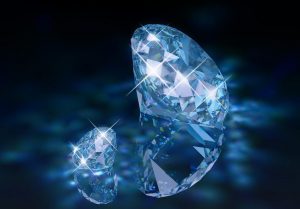All gem-quality corundum that is not red is known as sapphire, yet this name is popularly linked to the colour blue. Variation in colour, because of iron and titanium impurities, spans many shades, but the most valuable is clear, deep blue. Some stones, called colour-change sapphire, exhibit different shades of blue in artificial and natural light.
Good quality sapphire is found in Burma, Sri Lanka, and India. The best Indian sapphire is cornflower blue, and found in Kashmir, either in pegmatites or as waterworn pebbles in alluvial deposits. Sapphire from Thailand, Australia, and Nigeria is dark blue, and may appear nearly black. Montana (USA) produces sapphire of an attractive metallic blue. Other localities include Cambodia, Brazil, Kenya, Malawi, and Colombia.
Synthetic sapphire production began in the late 19th century. Commercial quantities became available in the early 20th century.




























Leave a Reply
You must be logged in to post a comment.